
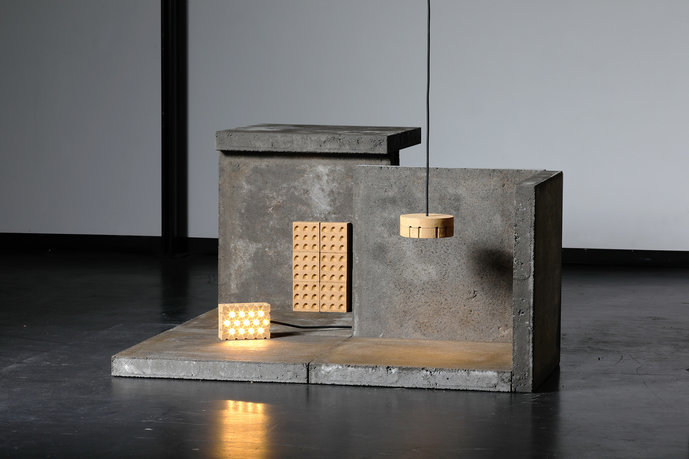
© Simon Diener

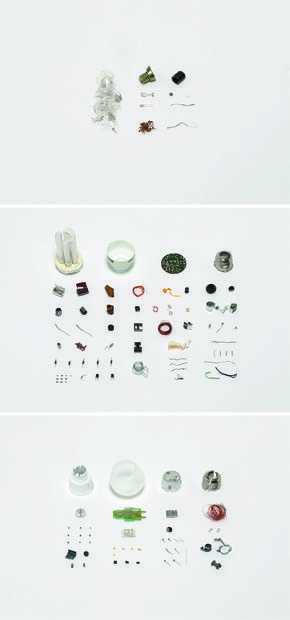
© Simon Diener

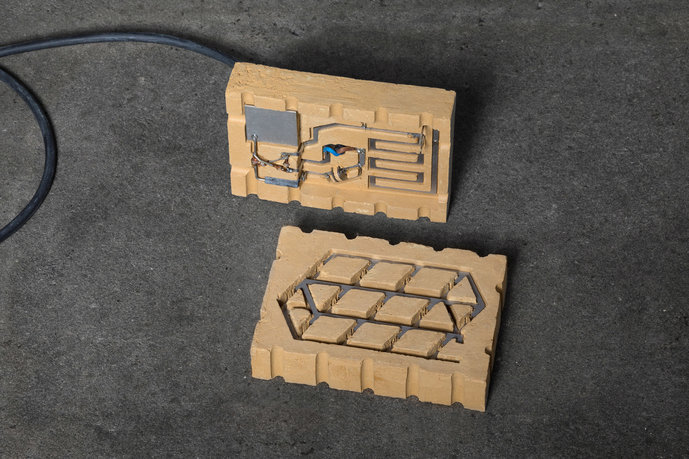
© Simon Diener

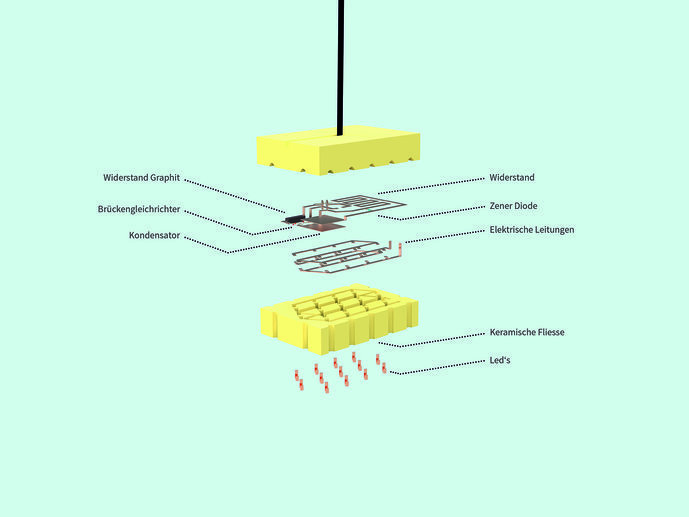
© Simon Diener

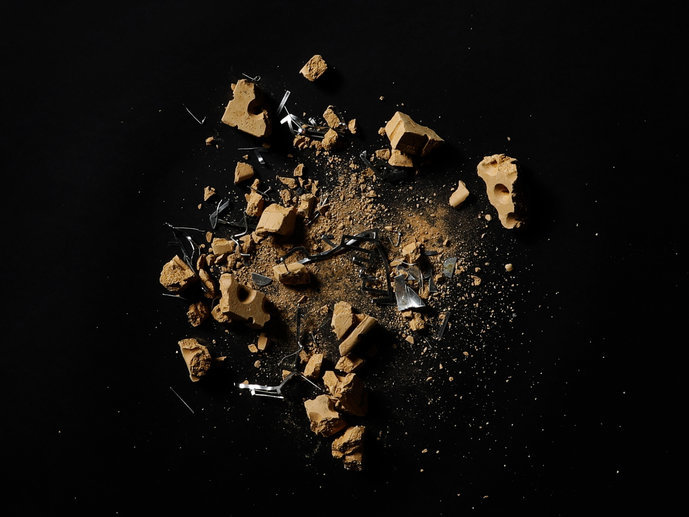
© Simon Diener
What would the products of a design practice look like that consistently plans for their deconstruction from the outset in order to make their components available again later as raw materials?
Components in illuminants that are easy to separate both visually and physically became extinct with the conventional light bulb. Analogous to the dismantling of such a bulb, in which a single blow is sufficient to expose the various materials, the decomposition of "Brittle Objects" is proposed: In the recycling plant, the brittle ceramic parts break up and expose the conductive grid structure as well as the various other sorted electronic components, which can then be sorted out with the help of overflow magnets, etc. The components can then be reused as raw materials. For this purpose, the assembly, dimensioning and design of the electrical components require the special attention of the designer, where, according to the usual understanding, purchased parts only have to be "accommodated". The electronic components are thought of as a grid structure. Thus, the use of a printed circuit board is not necessary. The ceramic tiles hold the components in place and in extreme cases even take over individual functions of the components. This makes it possible to reduce the number of materials required, which can be optimally recycled.
Supervision: Prof. Mario Minale, Hansjerg Maier-Aichen